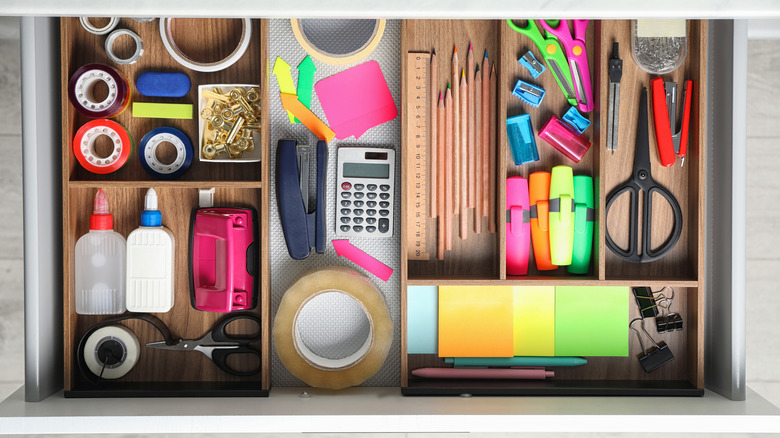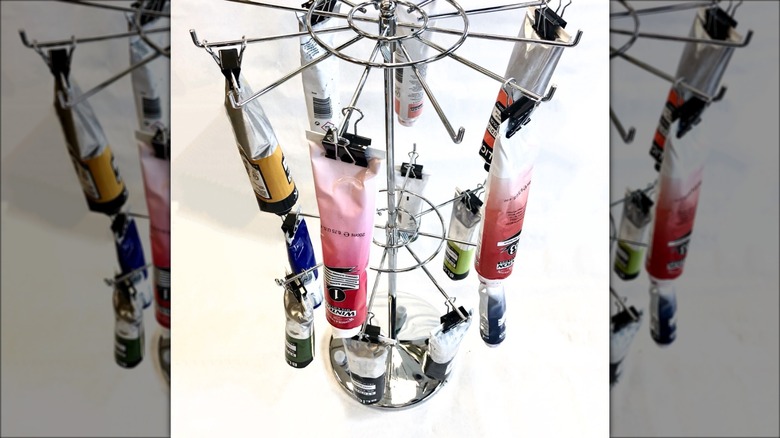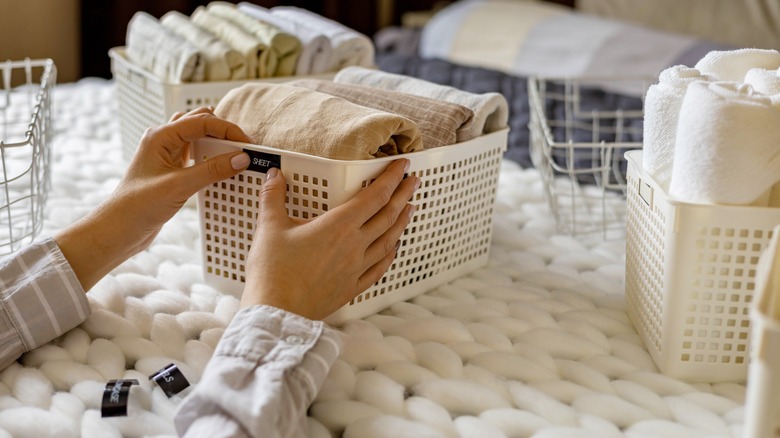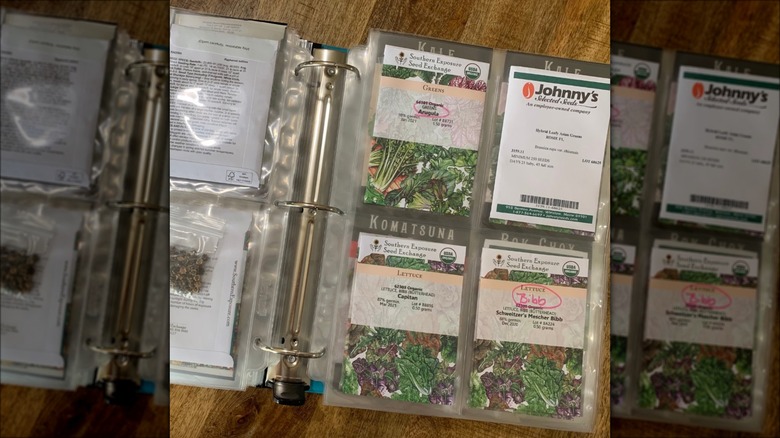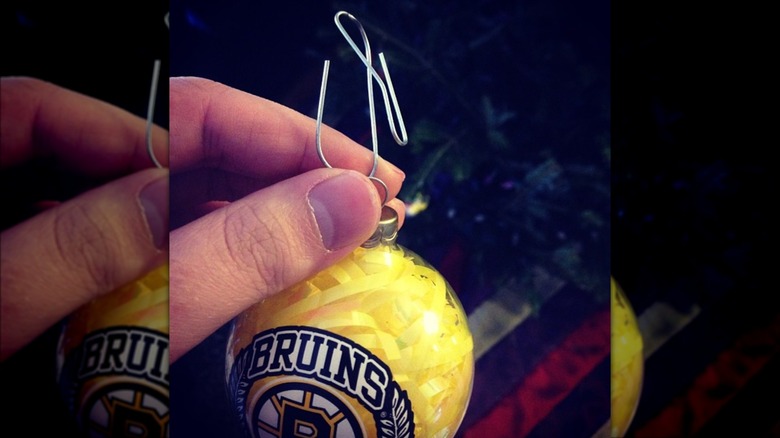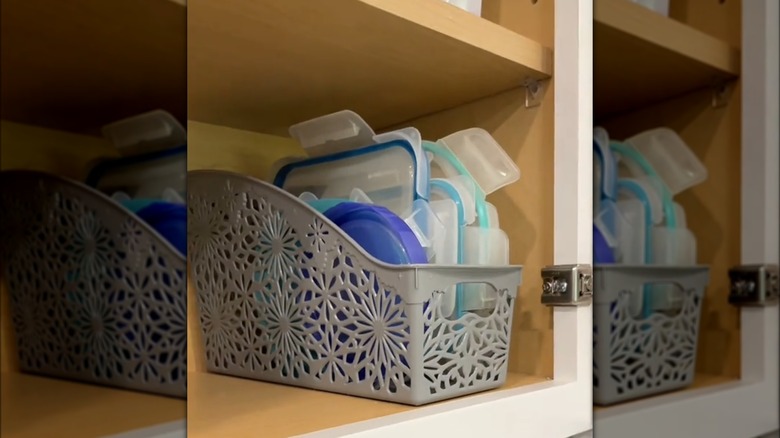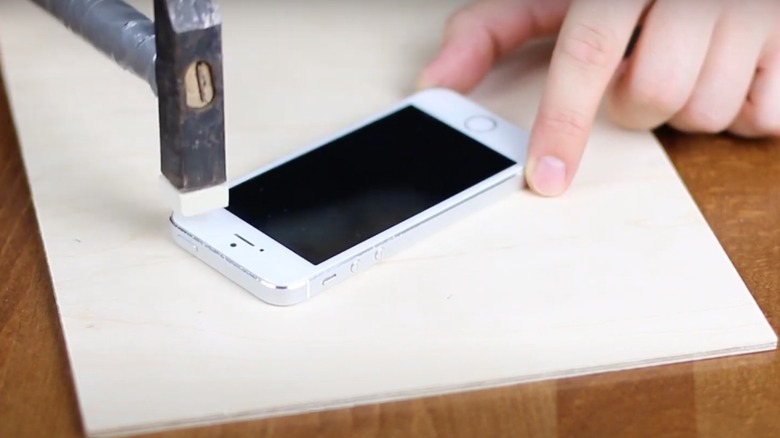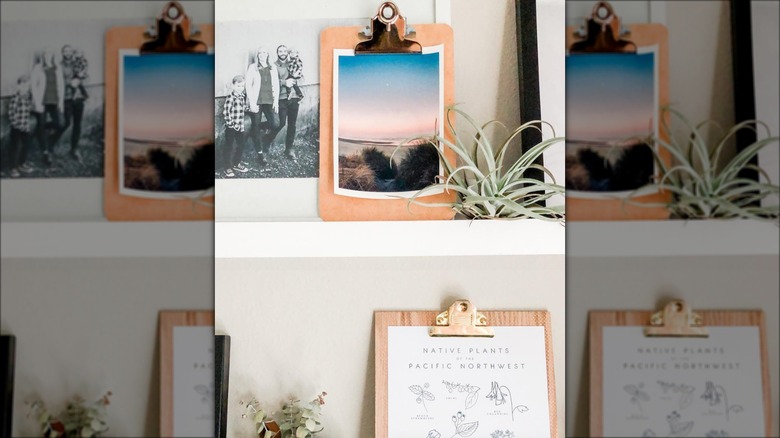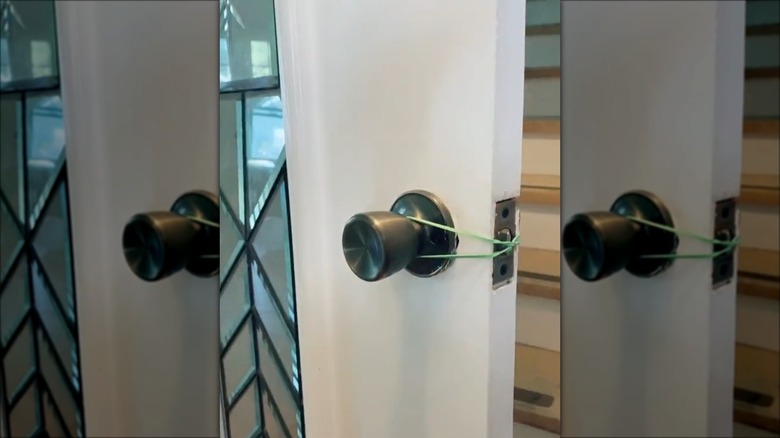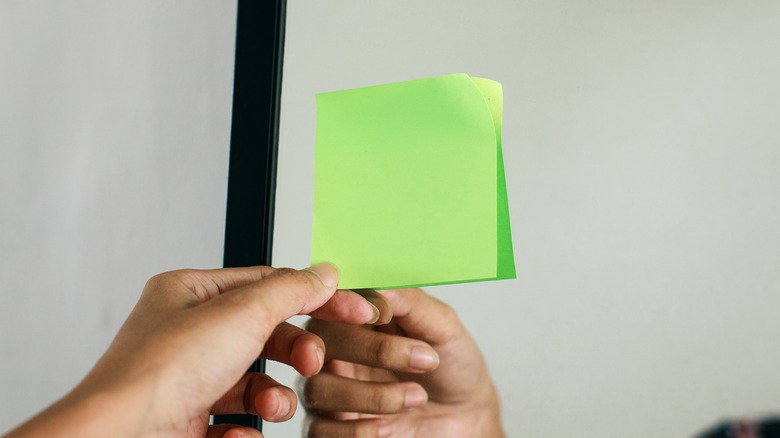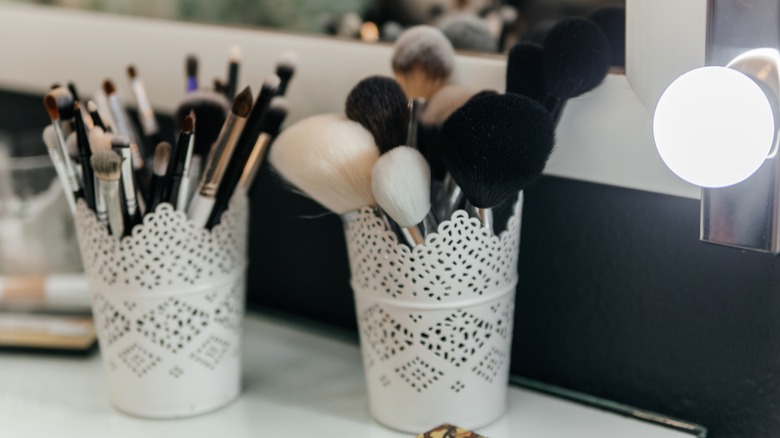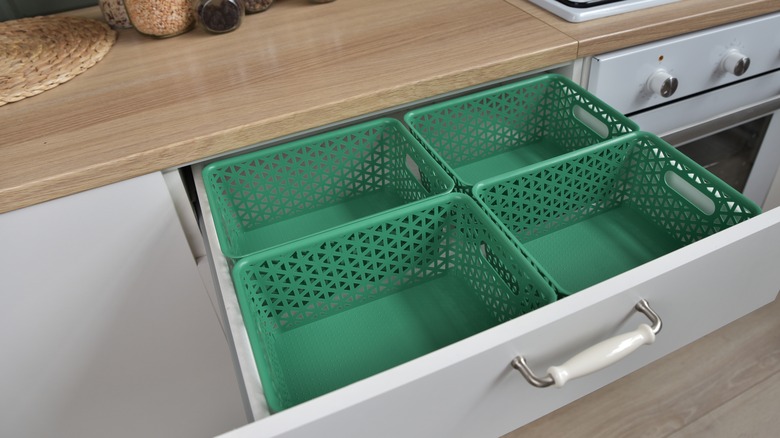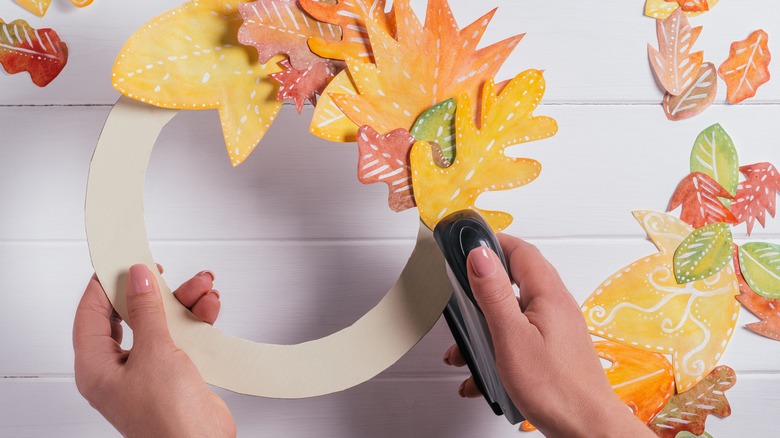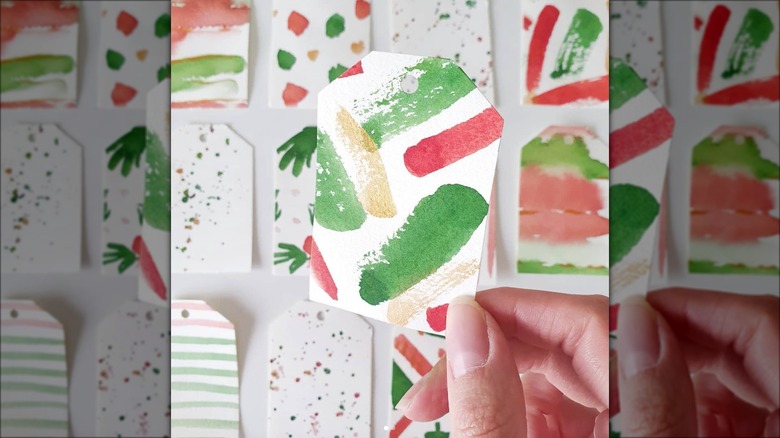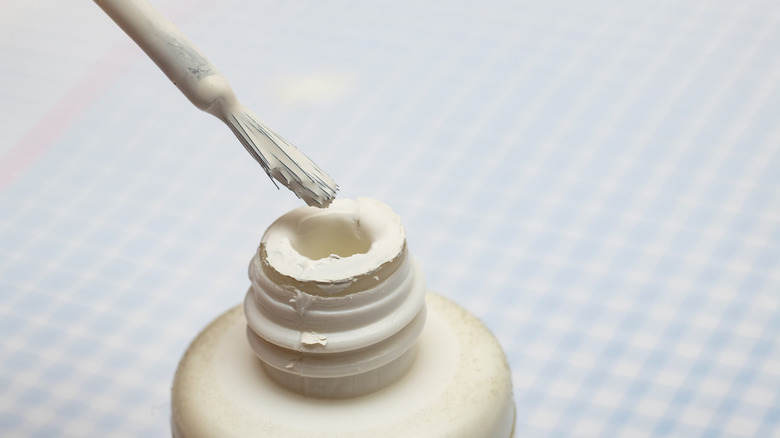14 Office Supplies You Should Be Repurposing Around Your Home
Things are changing in the work world. According to recent data from the Pew Research Center, of those with jobs that can be completed remotely, 76% of people work from home full-time or during part of the week. This obviously means massive changes in how we use our spaces, with many people prioritizing creating a home office, but it also increases our reliance on digital communication with coworkers who are no longer in the same physical space. Rather than working primarily with paper and physical files, most of our work takes place on the computer.
As such, many of the office supplies that we're familiar with aren't getting nearly as much use as they used to. If you notice that your office is full of items that haven't been touched since things went digital, you're not alone, but that doesn't mean these supplies are no longer useful. With a bit of creativity, you can actually repurpose these items in plenty of different ways around your space, whether that means finding better organization for your gardening supplies in a binder or creating a new and functional way to sort cords using binder clips. By taking this approach, you can cut back on unused items in your office while simultaneously making the other spaces in your home more organized and functional — all without spending a dime.
1. Binder clips
Binder clips are incredibly durable and great for holding large stacks of paper together, but their simple design is also great for clipping onto other items around the home. Use your binder clips in lieu of chip clips to seal open bags in your pantry or freezer, clip them onto the end of tubes of paint to hang them on a jewelry organizer, or use them to hang items on hooks. If your binder clips are large enough, they can also be clipped onto the side of your desk to keep your charging cables organized.
2. Label maker
Label makers might have been originally intended for use in the office, but they can also be used to help you keep better track of anything else in your space. Just be careful — once you start labeling your items, you might find yourself wanting to place a sticker on just about everything in your house. Use a label maker to signify what items are in closed bins so you don't have to rummage through, as a way to identify seasonings in DIY magnetic spice jars, or to label your DIY cleaning products so they're easier to differentiate.
3. Binders
If you have an extra binder lying around, consider using it for more than just paper. Binders are customizable, so if you invest in the correct kinds of inserts, you can create a streamlined, portable, and functional storage space for small items. Pick up some clip-in binder bags if you want to turn your binder into convenient cord storage, or invest in some photo sleeves to create a place where you can easily see and flip through packets of seeds. The possibilities with this one are endless, so don't be afraid to get creative with your ideas.
4. Paperclips
Paperclips might seem like one of the most inconsequential items to toss out during your office declutter, but if you hold on to a couple, they can be surprisingly useful for plenty of different jobs around the house. Leave them as-is as a quick substitute for a bag clip or a bookmark, slightly unfurl them to use as a detail cleaning tool for your electronics or as an easy way to remove SD cards, or completely unravel and reshape your paperclip to act as a Christmas ornament hook or as a tool to clean your hairbrush.
5. File holders
File holders used to be an office essential, but if your documents only exist on a computer screen, they're likely not getting a ton of use. Luckily, however, these conveniently-shaped organizers can be repurposed to store plenty of other things. Place one in your cabinet to keep your plastic food storage lids organized, mount one to the wall in your pantry to store aluminum foil and parchment paper, or use one to hold rolled-up washcloths in your bathroom. Because they're relatively narrow, they're great to use as organizers if you're trying to capitalize on limited space.
6. Erasers
Surprisingly, erasers are good for much more than just clearing away pencil marks. With some gentle rubbing, you can use them to help remove minor scuff marks on your car, furniture, or shoes, as a way to clear off sticky residue, and to help lift dirt from grout lines. The rubbery material can also come in handy to cushion against impact and reduce sound. Cut down a sliver of eraser to use as a way to muffle the noise of slamming cabinet doors, or attach an eraser to a hammer as a quick substitute for a mallet.
7. Clipboards
Still hanging on to a couple of old clipboards that you used to jot down notes on the go? You're in luck. Clipboards are such a simple item, but they can really spruce up a space when used correctly. Use one to display photos without damaging them with tacks, mount one on the wall as a place to store important notes, or clip on a printable calendar to keep you and your family on schedule. If you have kids, clipboards can also be easily repurposed for use in the car so they can doodle and color on the go.
8. Rubber bands
There are plenty of different ways to repurpose rubber bands, thanks to their simple design. They can be used to hold items closed — a bag of chips, a box that you don't want to open during transport, or a bottle of soap that tends to leak, for example — or they can be used to keep doors open when wrapped around the knobs and over the latch. They're also great to use in the kitchen if you have trouble opening jars. Wrap one around the rim of the lid, and you should notice you get some extra grip.
9. Sticky notes
Sticky notes can help remind you about tasks at work, but they can also serve the same purpose at home. Bring them out of the office and use them to leave reminders on your nightstand, refrigerator, or mirror to keep you on track throughout the day. Because of their sticky backing, they can also be used to easily label items, whether you're marking dates on meal prep in the kitchen or wrapping them around cords. Once you're done with the note, instead of trashing it, use the sticky surface to help clear away dirt on your keyboard.
10. Pencil holder
If you find that you don't really use pens and pencils in your office, it's likely you won't have all that much use for a pencil holder anymore, either. Instead of tossing it out, use it to hold other items. Pencil holders are great for organizing makeup brushes, cooking utensils, and paintbrushes. If you like the look of your pencil holder and want to turn it into more intentional décor, it can also be repurposed as a vase. If you plan to fill it with water, however, make sure it's made of a material that won't leak.
11. Paper trays
Paper trays might be the perfect size and shape to hold onto your important documents, but that doesn't mean it's the only job they can do. Instead of trashing your paper tray after realizing you don't use it all that much, consider placing it in a kitchen or bathroom drawer to make a convenient organizer. Paper trays are also great to use on bathroom counters to better organize your toiletries, on side tables to create a dedicated spot for remotes, and underneath bathroom or kitchen counters to hold on to cleaning supplies and keep them in one area.
12. Stapler
Staplers might not seem like they have all that much use outside of the office, but they're actually an incredibly versatile tool. While you likely won't be able to pull off any major DIY projects with just a plain stapler, it can still be used for simple fixes and to tack down lightweight objects. Use a stapler to attach papers to a bulletin board, decorate a wreath, tack down the edges of upholstery fabric that's starting to come undone, or quickly and securely seal up paper or plastic bags as a secure alternative to a clip.
13. Hole punch
Hole punches are incredibly useful if you like to store your documents in a binder, but they can also be a convenient tool to have on hand for DIY and crafting projects. Use your hole punch to create your own gift tags for presents, as a tool to help you bind your own notebook, or, if it's sharp enough, as a way to punch out fabric before installing grommets on your next sewing project. Once you're done, you can even save those little scraps left behind and use them as confetti for your next party or special event.
14. Correction fluid
Correction fluid can be used to cover errors on paper, but it can also be used to conceal minor damage on other items around the house. If you have a piece of white furniture with small scratches, stains, or visible screws, go over these spots with a bit of correction fluid to cover them without having to invest in white paint. You can also do the same thing with minor damage to white walls, though it's important to check and see if the correction fluid matches the color of the existing paint so your correction doesn't stick out.
